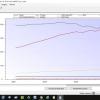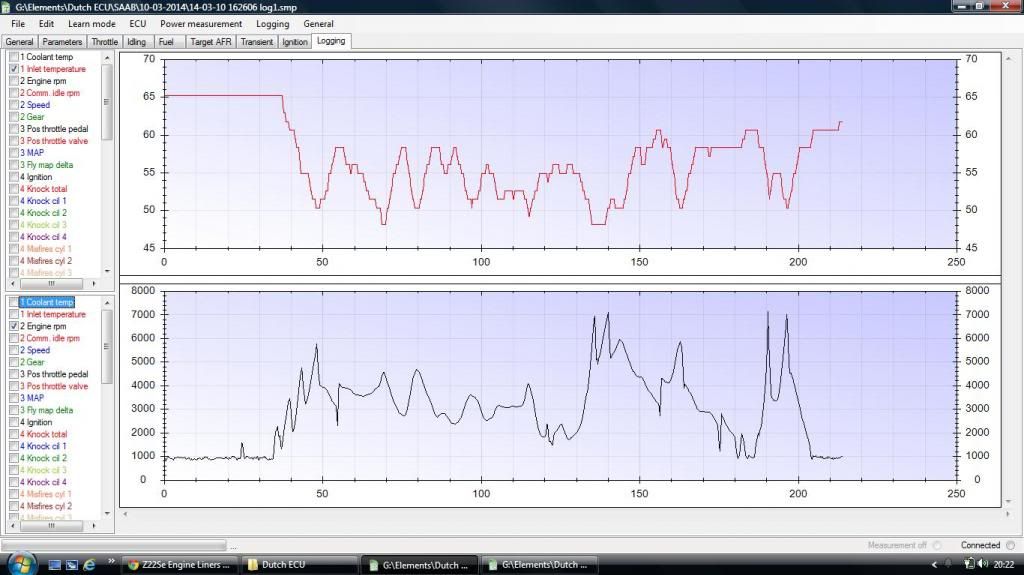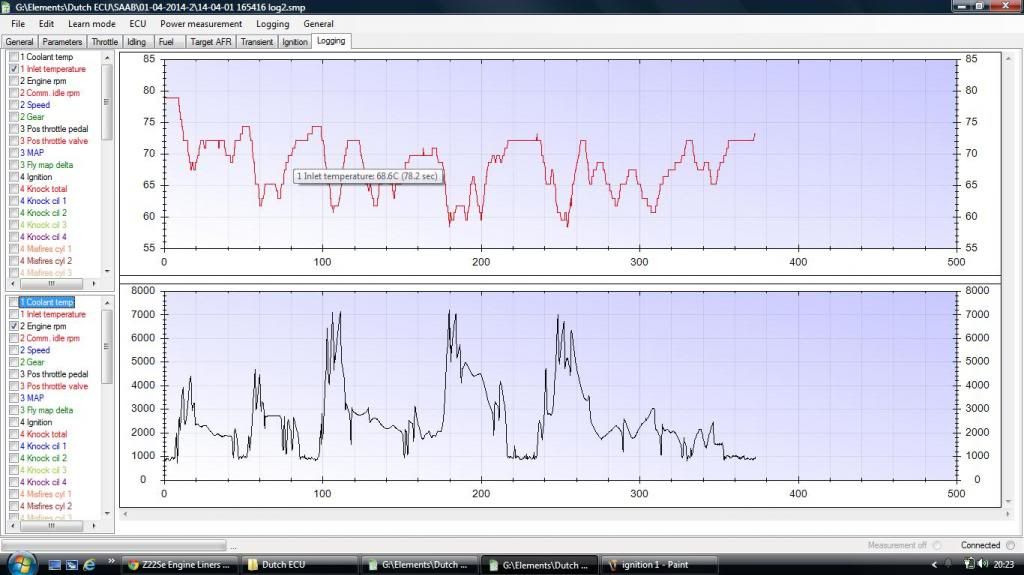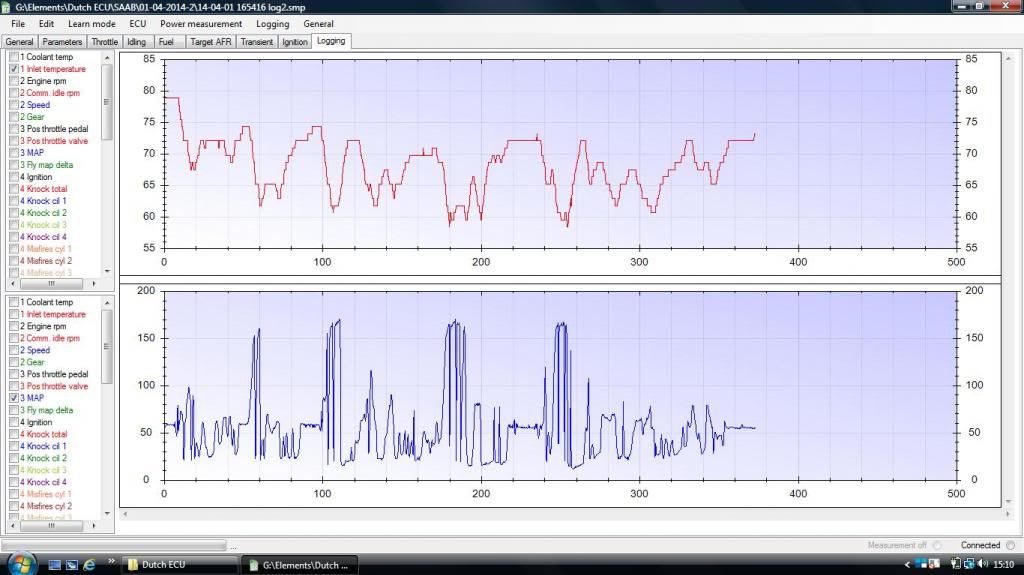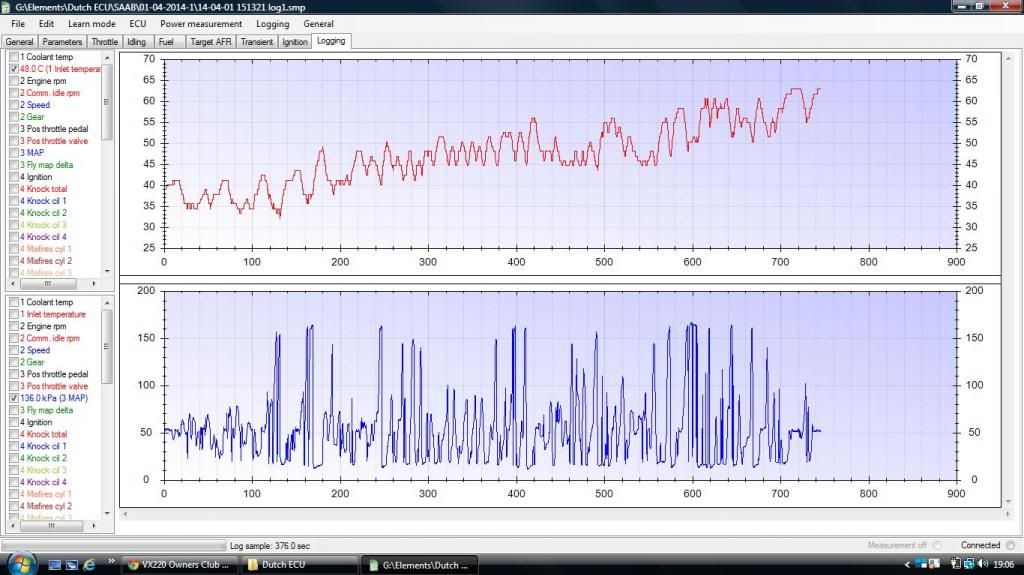Log IAT, MAP and RPM while moving the car and accelarating to get it under boost. You can't get a non moving car to boost, at least not for more than a split second and certainly not while holding revs. Might also be illustrating if you start logging with engine not running to see what happens to IAT when you start the engine. IAT should follow MAP from the moment you're above atmospheric. At stationary you have something like 0.2 bar if I remember correctly and zero influence from the SC (by pass). IAT should be same as outside. Everything above atmospheric and the SC is actually doing something and IAT should go up and follow MAP until off boost.
And you might want to ask Peter, he's very good in this stuff as he's seen millions of logs 
The system on the SC is not so straighforward, as it has a lot of latency and heat build-up in the system that confuses things. Also I think the hot PCV gasses can skew your IAT measurement a bit @ idle and low load, but that is only a tiny amount of air/gas.... 
I should have mentioned that my way of reasoning applies to cold systems. Heat soaked is different, but it will take a while to get there. So from cold, the only way I can see is as above. The hotter the system gets, the more latency you get, as the system loses it's ability to cool down the charged air.
But look at the first graph, the one that starts with an IAT of 65C at stationary. Looks like he blips the engine a couple of times (sharp peaks in RPM) and T goes down to 50, after that it looks like some driving (hard to say without a time scale), as RPM goes up/down more gradually. But still if you look at the T and RPM graphs, they are the exact opposite. With higher RPM, T goes down and lower RPM, T goes up. Doesn't make sense, even with latency where you may start at a higher T and the system reluctant to cool down, the general trend should still be the same.
I would check by making a log using my own car, but no spare time  .... and just realize I don't have a TMAP. Well, I have one, but it's on my desk, waiting to be installed.
.... and just realize I don't have a TMAP. Well, I have one, but it's on my desk, waiting to be installed.





